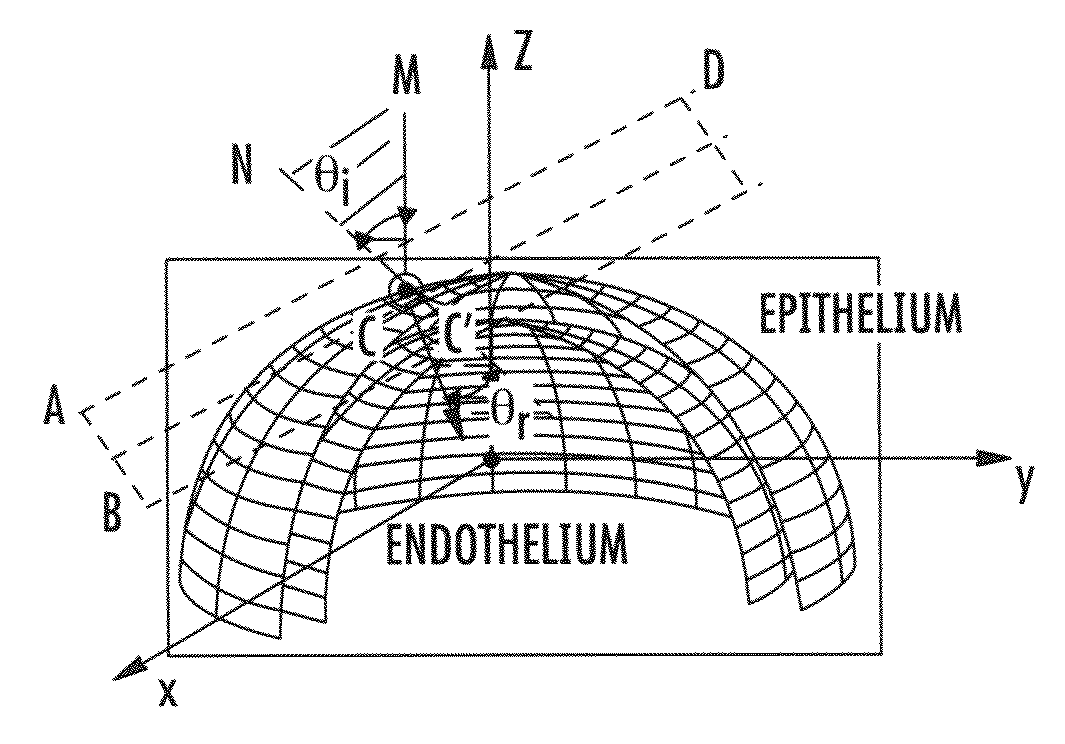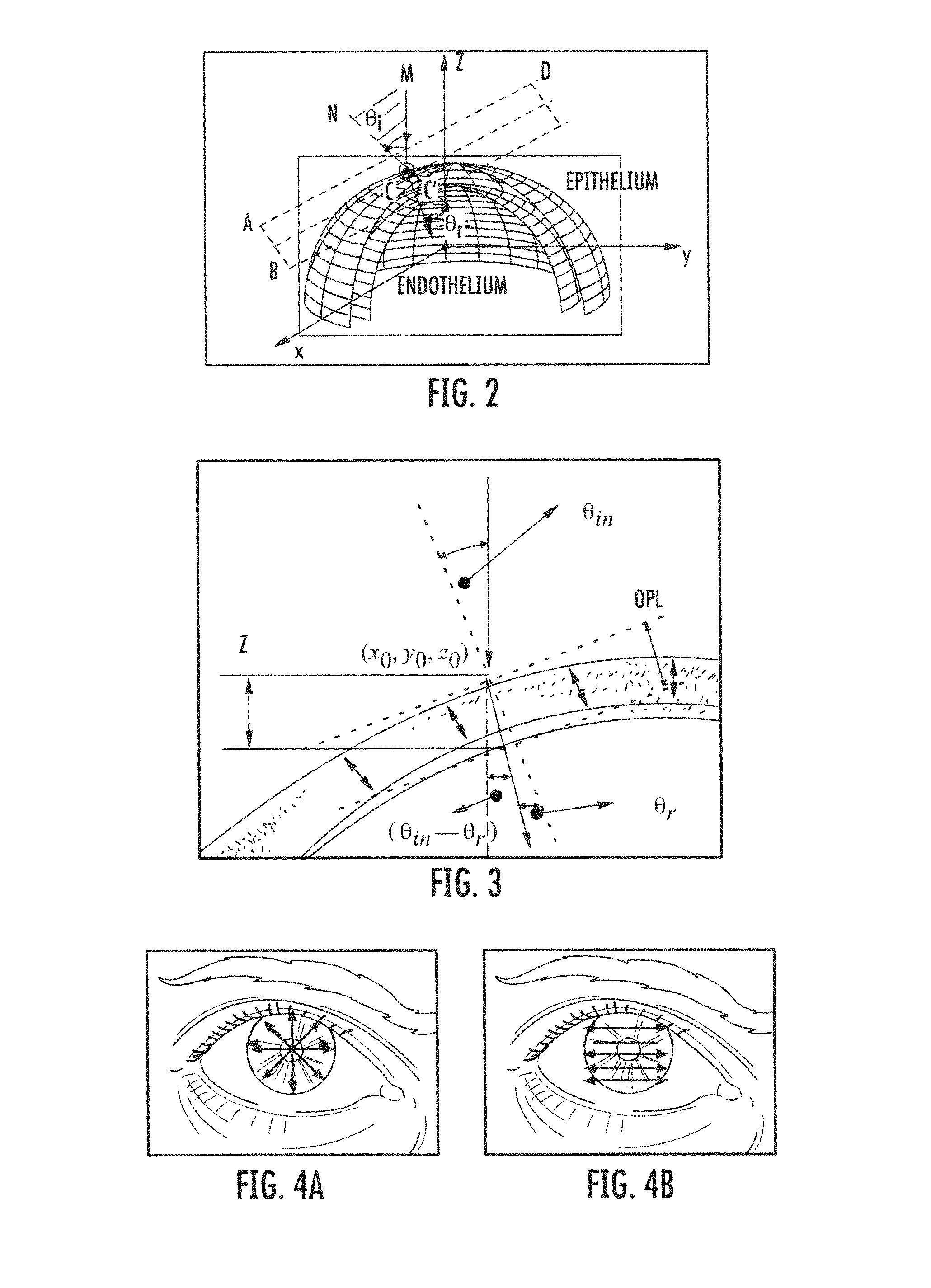Methods and computer program products for quantitative three-dimensional image correction and clinical parameter computation in optical coherence tomography
a three-dimensional image correction and clinical parameter technology, applied in image enhancement, eye diagnostics, instruments, etc., can solve the problems of not correcting the raw image data for refraction at the sample interface, not accurately portraying the refracting surface of the eye, and not accurately portraying the effect of different refractive indices in different regions of the sampl
- Summary
- Abstract
- Description
- Claims
- Application Information
AI Technical Summary
Benefits of technology
Problems solved by technology
Method used
Image
Examples
Embodiment Construction
Reference will now be made in detail to possible embodiments of the present subject matter, one or more examples of which are shown in the figures. Each example is provided to explain the subject matter and not as a limitation. In fact, features illustrated or described as part of one embodiment can be used in another embodiment to yield still a further embodiment. It is intended that the subject matter disclosed and envisioned herein covers such modifications and variations.
For meaningful analysis of the cornea of an eye from spectral domain optical coherence tomography (“SD-OCT”) data, effects of refraction at the epithelial and endothelial surfaces should be accounted for. A method for three-dimensional (“3D”) refraction correction based on a vector representation which accounts for refraction of optical coherence tomography (“OCT”) light in the cornea is present herein below. This method can be used to dewarp raw SD-OCT volumes. The method can also be used to reconstruct the tru...
PUM
 Login to View More
Login to View More Abstract
Description
Claims
Application Information
 Login to View More
Login to View More - R&D
- Intellectual Property
- Life Sciences
- Materials
- Tech Scout
- Unparalleled Data Quality
- Higher Quality Content
- 60% Fewer Hallucinations
Browse by: Latest US Patents, China's latest patents, Technical Efficacy Thesaurus, Application Domain, Technology Topic, Popular Technical Reports.
© 2025 PatSnap. All rights reserved.Legal|Privacy policy|Modern Slavery Act Transparency Statement|Sitemap|About US| Contact US: help@patsnap.com



